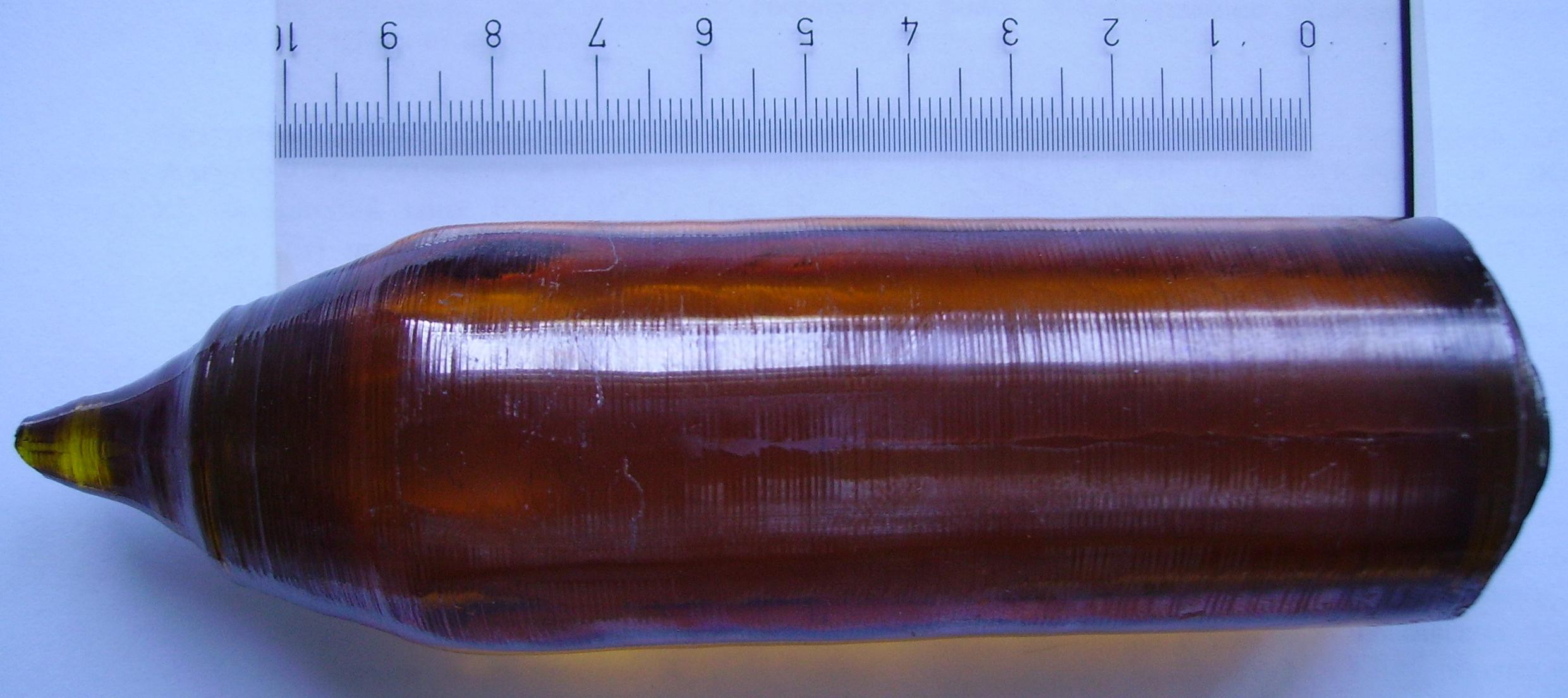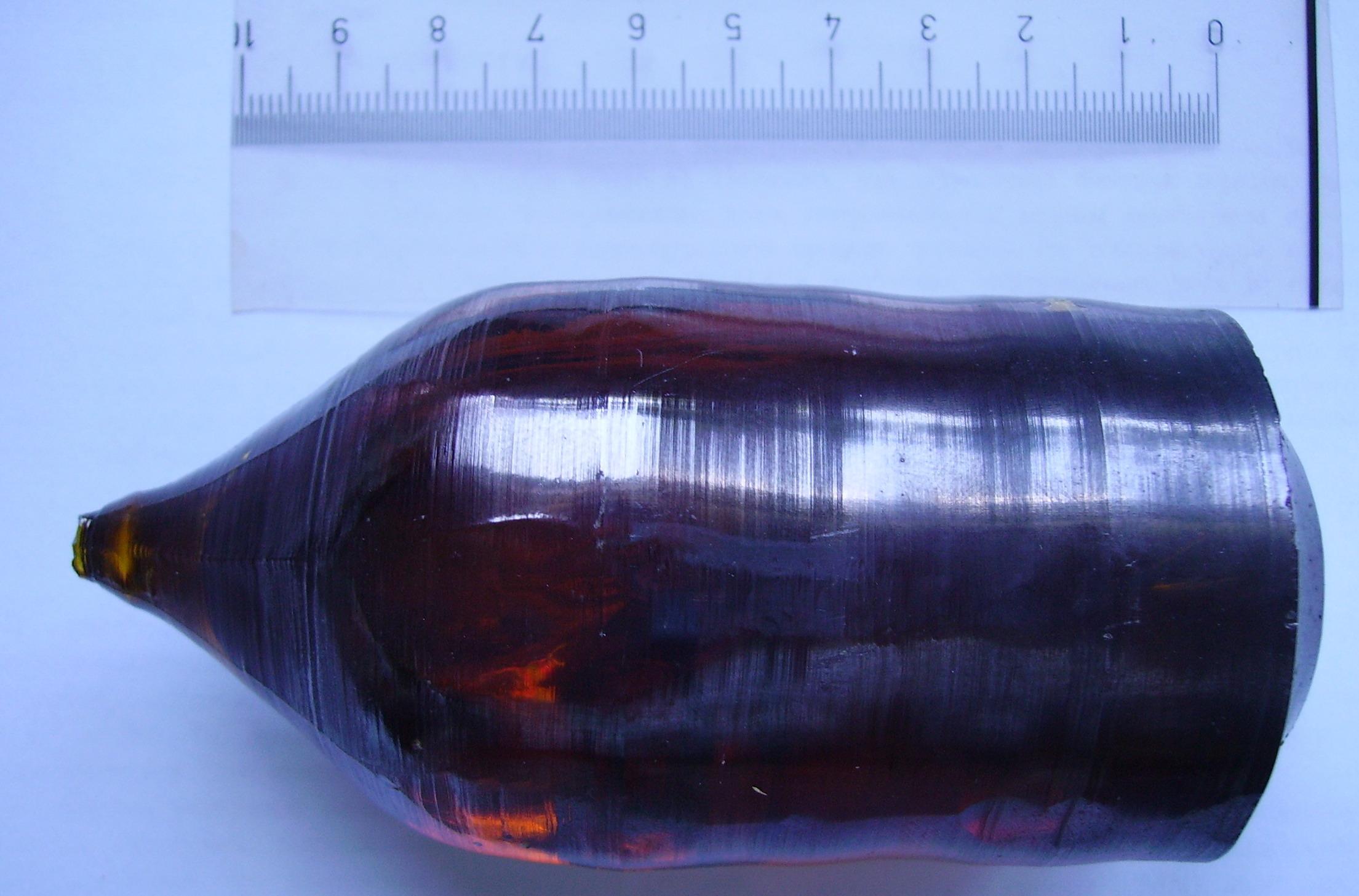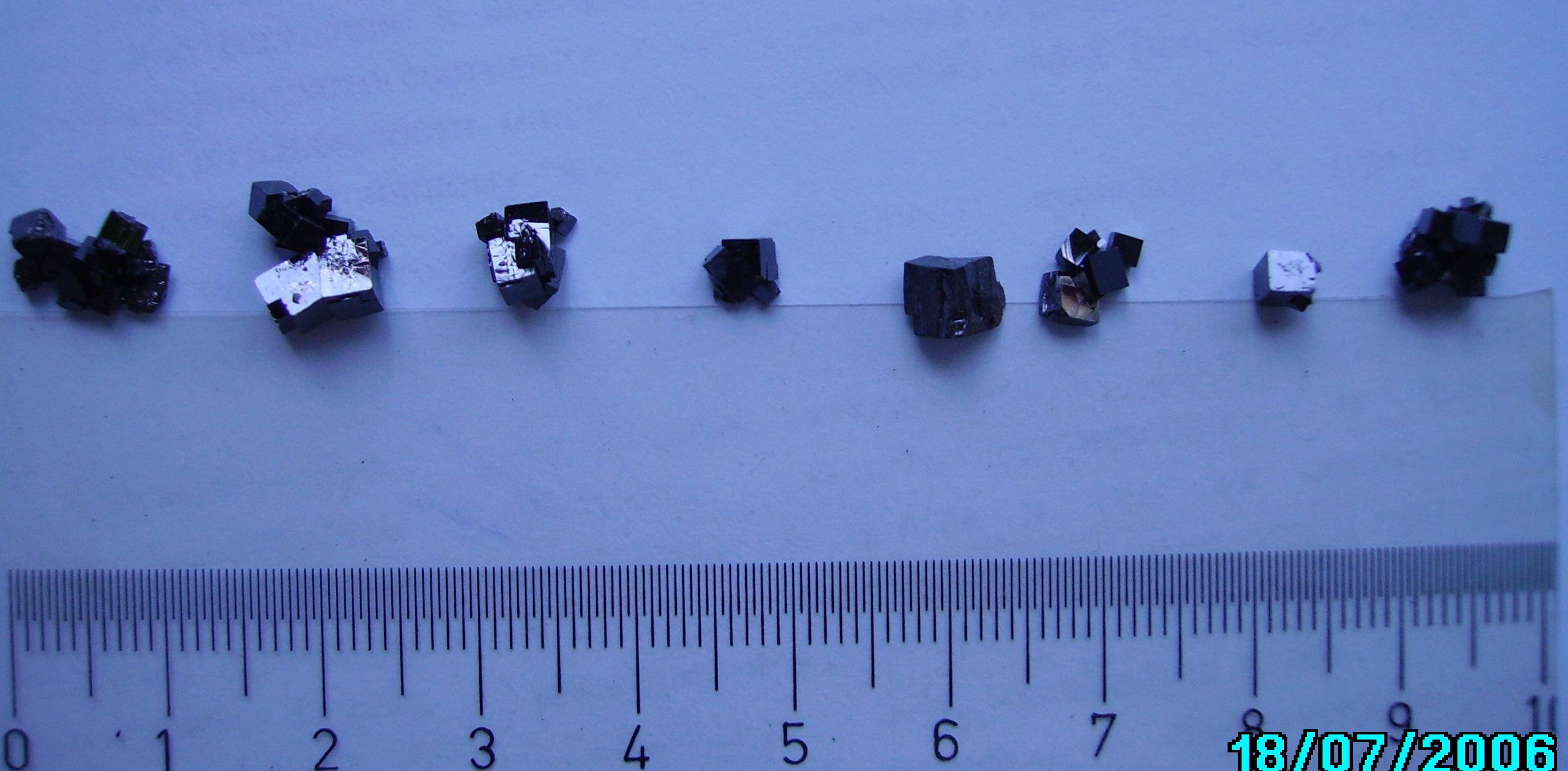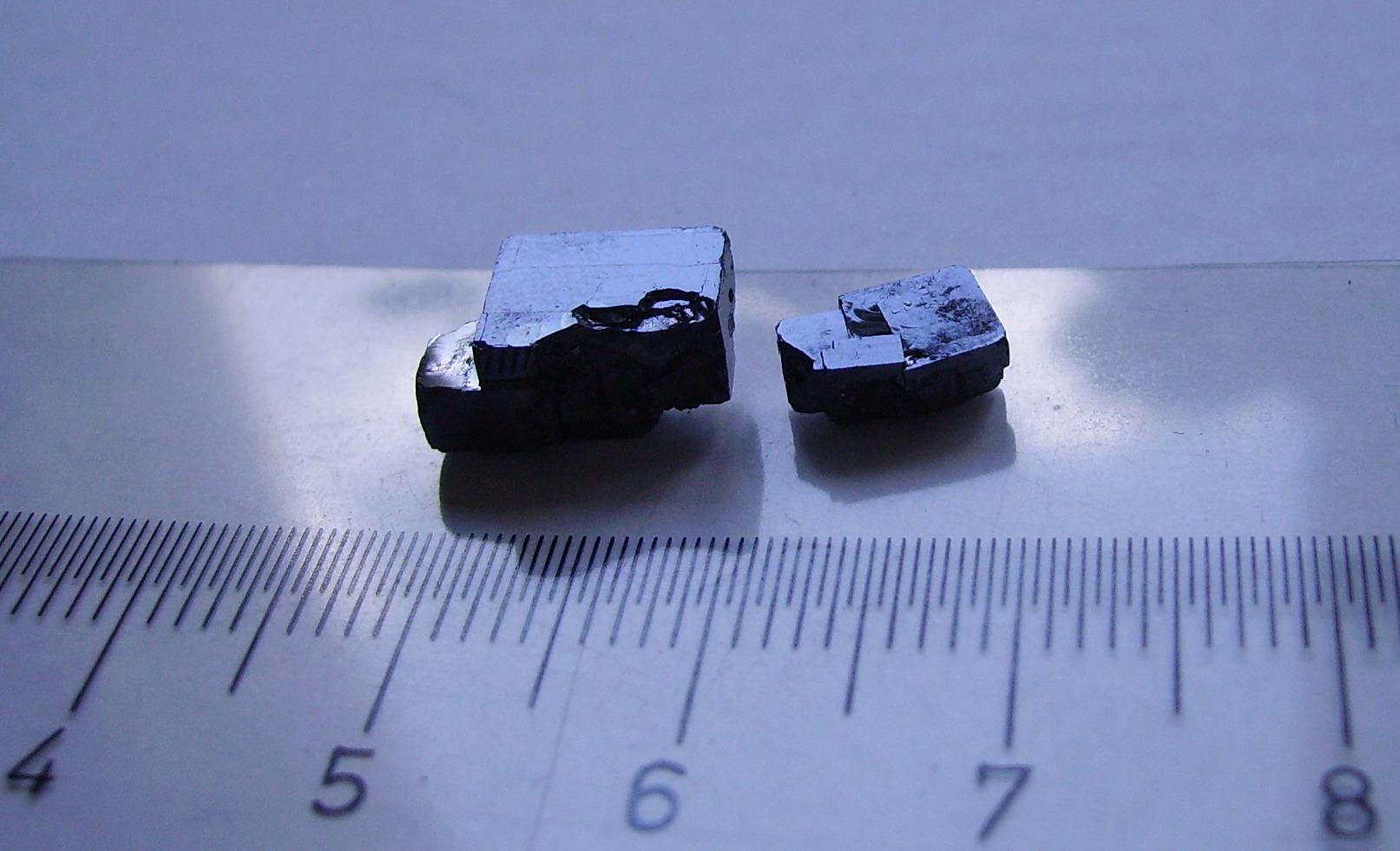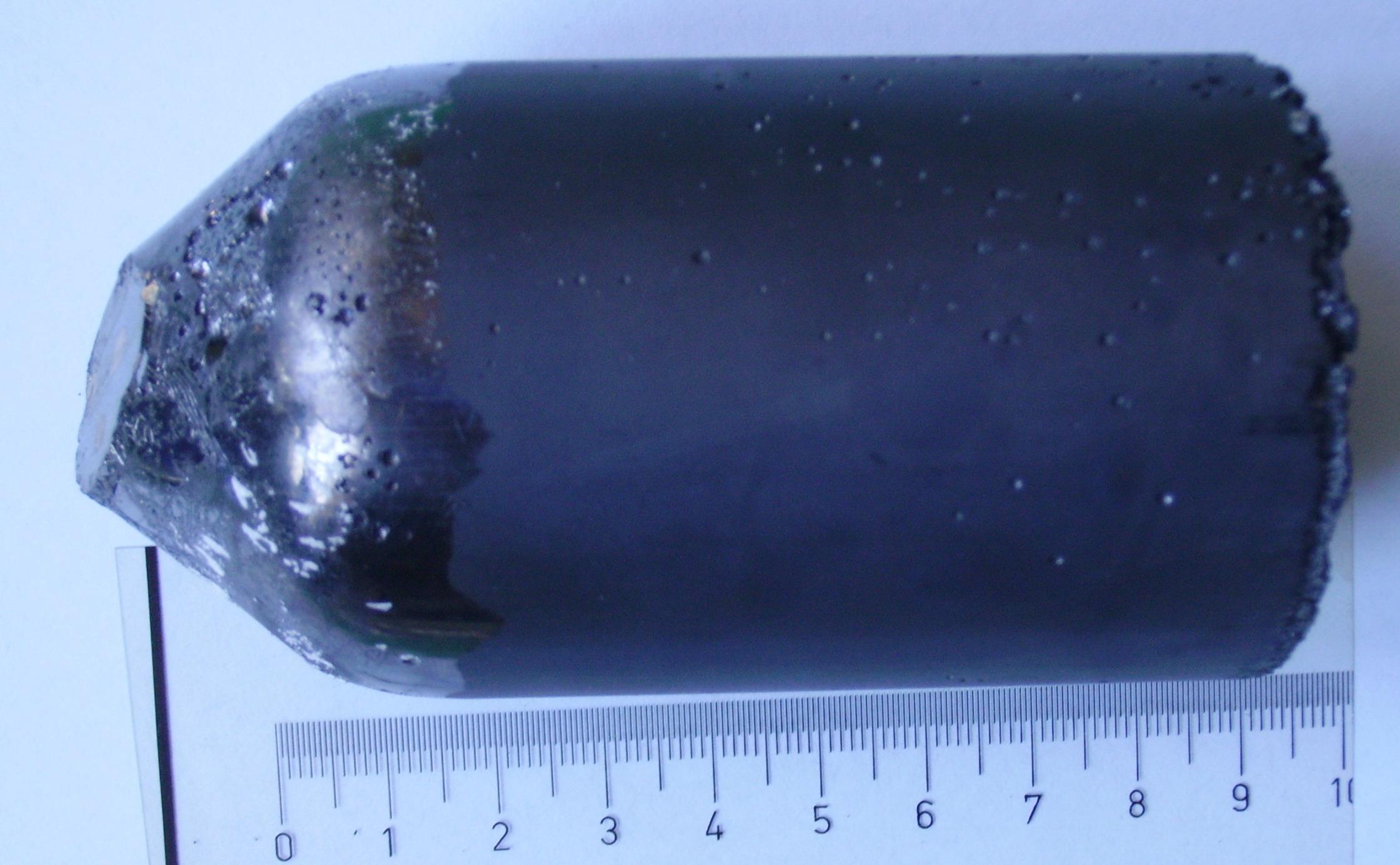Mercuric iodide (HgI2)
Large (10x10x30 mm3) and high quality crystals of HgI2 were grown from vapor phase by the method of temperature oscillations in the period 1978- 1984 (later by request only). The complete necessary equipment, apparatuses and digital control units were developed at this time.
The main practical application of this material is as a detector of X- and g - rays operating at room temperature.
Crystals with sillenite- type structure based on g-Bi2O3:
Bi12MO20 (M= Ge, Si or Ti)
The crystals of Bi12MO20 (doped and undoped) are grown by the Czochralski method, while the Bi12TiO20 by the method of the top- seed solution growth. The diameter of the grown crystals is usually = (60-70)mm and their length is 100-150mm. The dimensions of the obtained crystals of Bi12TiO20 are of about 30- 50% smaller. The quality of Bi12MO20 is very high. All needed equipment were developed (including apparatuses with digital control of the diameter of the growing crystal, operating in real time) in our Laboratory.
The main practical application of Bi12MO20 crystals is in the field of applied optics, accustical optics and electronics. These materials seemed promising as a media of optical information storage in the beginning of the century.
Crystals with eulytine- type structure- Bi4Ge3O12
These crystals are grown by the Czochralski method and indicate excellent quality as a scintillation detector of ?-rays. The dimensions of the obtained crystals are usually diameter of 40-55mm and length of 120-150mm.
Main application of the material: scintillation detector of g- rays. The possible application of doped (usually with one or two different dopants) Bi4Ge3O12 crystals is tested in different laboratories in last years
Cadmium telluride (CdTe) crystals
The CdTe crystals are grown usually by the directional crystallization of a melt with nearly stoichiometric copmosition in evaquated and sealed quartz ampoules. The grown crystals have diameter of about 45- 55 mm and length of 120-150mm, 2-4 grain’ boundaries on a cross section and large single crystal volumes. Such crystals were grown also by the travelling heater method as well as by the method of directional crystallization of a high- temperature solution.
There are many potential application of the CdTe crystals: optics, detection of X- and g- rays at room temperature, substrates for growth of epitaxial layers of other II-VI binary, ternary and more complex compounds etc.
Crystals of complex oxides with perovskite- type structure
These crystals are grown by the high temperature solution growth method. Their dimensions depends on the crystal growth conditions as well as on the composition of the grown crystal and its structure and are in the range from 1mm3 to 1-1,5cm3. They are of high interest for practical application as different materials exhibit ferroelectric and ferromagnetic properties. Some of these materials reveals the so- called “giant magnetic resistance”. The work during the last years is focussed on the synthesis and crystal growth of the so- called ferroics based on complex oxide materials. The necessity of the growth of such single crystals is determined by the need of a correct measurement of their basic structure and physical parameters.
Crystal growth
